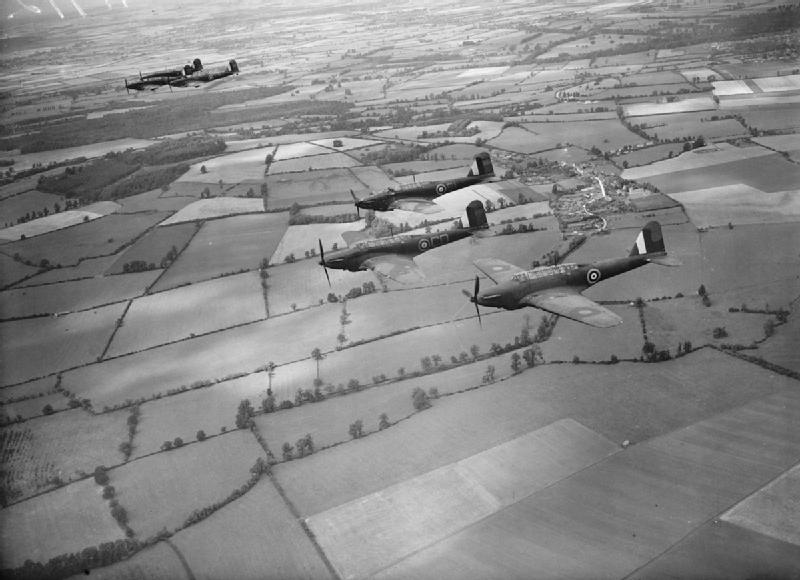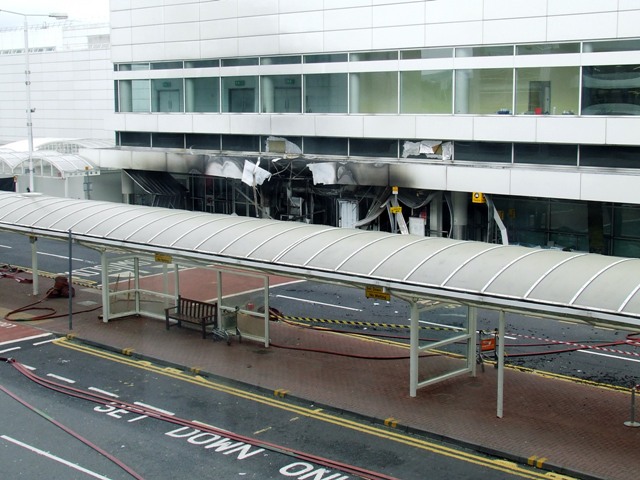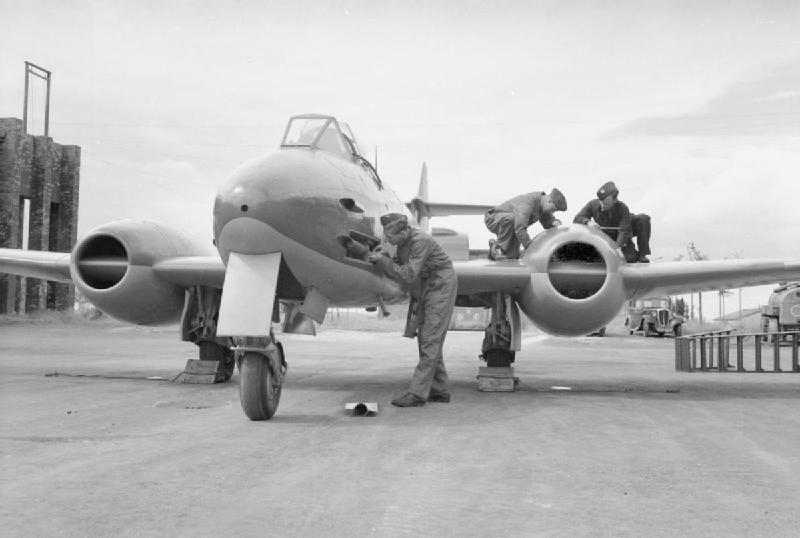|
Air Experience Flight
An Air Experience Flight (AEF) is a training unit of the Royal Air Force Volunteer Reserve (Training Branch) whose main purpose is to give introductory flying experience to cadets from the Air Training Corps and the Combined Cadet Force. As of 2019, thirteen AEFs are active. History The AEFs, numbered from 1 to 13, were formed across the United Kingdom in 1958, all but two forming on the same day, 8 September. All were equipped with the de Havilland Canada DHC-1 Chipmunk T.10 trainer. An exception was No. 5 AEF, which also operated a single Beagle Husky (''XW635'') from 1969 to 1989. In the mid-1990s they were merged with co-located University Air Squadrons (UASs), the Chipmunks being replaced by the existing UAS Scottish Aviation Bulldog T.1s. No. 13 AEF at RAF Aldergrove was disbanded in 1996. In 1999, the Grob Tutor T.1 began to replace the Bulldog. On 10 March 2016, Julian Brazier, Parliamentary Under-Secretary (Ministry of Defence), announced the return of 13 AEF and a ... [...More Info...] [...Related Items...] OR: [Wikipedia] [Google] [Baidu] |
Royal Air Force Volunteer Reserve (Training Branch)
The Royal Air Force Volunteer Reserve (Training Branch), often abbreviated to RAFVR(T), was a Volunteer Reserve element of the Royal Air Force specifically appointed in a cadet training role within the Royal Air Force Volunteer Reserve. Members of the RAFVR(T) had no call-up liability and often operated part-time with the Air Experience Flights and Volunteer Gliding Squadrons, which provide flight experience for the Royal Air Force Air Cadets. In December 2017, the Air Force Board determined that RAFVR(T) ranks as part of the Royal Air Force Air Cadets would be removed. This was to make way for the introduction within all MOD-sponsored cadet forces of the Cadet Forces Commission (CFC), which was introduced in 2017 and restated in 2018. Recruitment and selection Initial selection The majority of the pilots who staff the Air Experience Flights (AEF) are former regular service aircrew (RAF, Army or RN), some of them at Air rank serving as supernumerary Flying Officers RAFVR(T); ad ... [...More Info...] [...Related Items...] OR: [Wikipedia] [Google] [Baidu] |
RAF Leeming
Royal Air Force Leeming or RAF Leeming is a Royal Air Force (RAF) station located near Leeming, North Yorkshire, England. It was opened in 1940 and was jointly used by the RAF and the Royal Canadian Air Force (RCAF). Between 1950 and 1991, it operated mostly as a training base with Quick Reaction Force (QRF) Panavia Tornado F3 fighters based there in the latter stages of the Cold War and into the early 21st century. Since 2006, it has become the home of the deployable RAF communications cadre (No. 90 Signals Unit RAF) and the home of No. 135 Expeditionary Air Wing. History The area at the extreme western edge of the base was used in the 1930s by local flying enthusiasts. It took the name of ''Londonderry Aerodrome'' as it was closest to the hamlet of Londonderry in North Yorkshire. In the late 1930s, the Royal Air Force bought up the aerodrome and most of the surrounding land to convert it into an RAF airfield, which became known as Royal Air Force Leeming. Part of the buildu ... [...More Info...] [...Related Items...] OR: [Wikipedia] [Google] [Baidu] |
Air Cadet Organisations
The atmosphere of Earth is the layer of gases, known collectively as air, retained by Earth's gravity that surrounds the planet and forms its planetary atmosphere. The atmosphere of Earth protects life on Earth by creating pressure allowing for liquid water to exist on the Earth's surface, absorbing ultraviolet solar radiation, warming the surface through heat retention ( greenhouse effect), and reducing temperature extremes between day and night (the diurnal temperature variation). By mole fraction (i.e., by number of molecules), dry air contains 78.08% nitrogen, 20.95% oxygen, 0.93% argon, 0.04% carbon dioxide, and small amounts of other gases. Air also contains a variable amount of water vapor, on average around 1% at sea level, and 0.4% over the entire atmosphere. Air composition, temperature, and atmospheric pressure vary with altitude. Within the atmosphere, air suitable for use in photosynthesis by terrestrial plants and breathing of terrestrial animals is ... [...More Info...] [...Related Items...] OR: [Wikipedia] [Google] [Baidu] |
Air Cadets Air Experience Flights
The atmosphere of Earth is the layer of gases, known collectively as air, retained by Earth's gravity that surrounds the planet and forms its planetary atmosphere. The atmosphere of Earth protects life on Earth by creating pressure allowing for liquid water to exist on the Earth's surface, absorbing ultraviolet solar radiation, warming the surface through heat retention (greenhouse effect), and reducing temperature extremes between day and night (the diurnal temperature variation). By mole fraction (i.e., by number of molecules), dry air contains 78.08% nitrogen, 20.95% oxygen, 0.93% argon, 0.04% carbon dioxide, and small amounts of other gases. Air also contains a variable amount of water vapor, on average around 1% at sea level, and 0.4% over the entire atmosphere. Air composition, temperature, and atmospheric pressure vary with altitude. Within the atmosphere, air suitable for use in photosynthesis by terrestrial plants and breathing of terrestrial animals is found only in ... [...More Info...] [...Related Items...] OR: [Wikipedia] [Google] [Baidu] |
Leuchars Station
Leuchars Station is a British Army installation located in Leuchars, Fife, on the east coast of Scotland, near to the historic town of St Andrews. Formerly RAF Leuchars, it was the second most northerly air defence station in the United Kingdom (the most northerly being RAF Lossiemouth). The station ceased to be an RAF station in April 2015 when control of the site was transferred to the Army. History RAF Leuchars The Royal Air Force station at Leuchars opened on 16 March 1920, although its association with the military can be traced back to 1911 when military balloons were operated at the site. During its history the site was used as a RNAS fleet fighter station and later as a RAF Coastal Command airfield. Throughout the Cold War and beyond, the station was home to fighter aircraft which policed northern UK airspace. The station also hosted an annual International Airshow. Transfer to the Army On 18 July 2011, Defence Secretary Liam Fox announced that RAF Leuchars would ... [...More Info...] [...Related Items...] OR: [Wikipedia] [Google] [Baidu] |
RAF Woodvale
Royal Air Force Woodvale or RAF Woodvale is a Royal Air Force Station located next to the towns of Formby and Ainsdale in an area called Woodvale which is located to the south of Southport, Merseyside. Woodvale was constructed as an all-weather night fighter airfield for the defence of Liverpool. However, it did not open until 7 December 1941 which was just after the Liverpool Blitz which peaked in May of that year. History Second World War Woodvale opened in December 1941, six months after the end of the Liverpool Blitz. It was used for short periods by RAF squadrons that were rotated out of the zones in southern of England closest to German-occupied Europe. During their time at Woodvale, squadrons defended Merseyside. Polish 308 (Krakowski) Squadron was the first to arrive, on 12 December 1941, from RAF Northolt before leaving on 1 April 1942. Squadrons were rotated regularly. Several were Polish, including 315 (Dęblinski) Squadron and 317 (Wilenski) Squadron. Spit ... [...More Info...] [...Related Items...] OR: [Wikipedia] [Google] [Baidu] |
RAF Cosford
Royal Air Force Cosford or RAF Cosford (formerly DCAE Cosford) is a Royal Air Force station in Cosford, Shropshire, just to the northwest of Wolverhampton and next to Albrighton. History Origins RAF Cosford opened in 1938 as a joint aircraft maintenance, storage and technical training unit. It was originally intended to be opened as RAF Donington (the parish in which it is located) but to avoid confusion with the nearby army camp at Donnington it was named after Cosford Grange House which was located at the south western edge of the airfield. It has remained mainly a training unit to this day. The ''Fulton'' barrack block was built just before the Second World War as the largest single building barrack block in the UK. The block was named after Captain Fulton (an early Air Force pioneer) and paid for by his widow, Lady Fulton. It is a listed building and is now used for technical training. No 2 School of Technical Training was formed in 1938 and during the Second World War i ... [...More Info...] [...Related Items...] OR: [Wikipedia] [Google] [Baidu] |
RAF Benson
Royal Air Force Benson or RAF Benson is a Royal Air Force (RAF) station located at Benson, near Wallingford, in South Oxfordshire, England. It is a front-line station and home to the RAF's fleet of Westland Puma HC2 support helicopters, used primarily for the transportation of troops & equipment. Flying squadrons comprise No. 33 Squadron & No. 230 Squadron flying the Puma, No. 22 Squadron which provides operational evaluation and training for all aircraft in Joint Helicopter Command and No. 28 Squadron, which is the combined Puma and Boeing Chinook HC6A training unit. Other units include the Oxford University Air Squadron and No. 6 Air Experience Flight, both flying the Grob Tutor T1 light training aircraft used for student and cadet flying training. The National Police Air Service and the Thames Valley Air Ambulance are also based at the station, both operating Airbus H135 helicopters. RAF Benson opened in 1939 and during the Second World War it was tasked wit ... [...More Info...] [...Related Items...] OR: [Wikipedia] [Google] [Baidu] |
RAF Wittering
Royal Air Force Wittering or more simply RAF Wittering is a Royal Air Force station within the unitary authority area of Peterborough, Cambridgeshire and the unitary authority area of North Northamptonshire. Although Stamford in Lincolnshire is the nearest town, the runways of RAF Wittering cross the boundary between Cambridgeshire and Northamptonshire. History First World War Wittering's use as a military airfield dates back to 5 May 1916 when it began as RFC Stamford. The aerodrome was initially created for A Flight of No. 38 (Home Defence) Squadron. In common with other Home Defence squadrons at the time it was used for training during the day and for air defence at night. From the flight's operational declaration in December 1916 until it deployed to France in November 1917, its BE2cs, RE7s, and FE2bs were involved in anti-Zeppelin patrols. The station's training role expanded when it became the Royal Flying Corps's No.1 Training Depot Station in 1917. The neighb ... [...More Info...] [...Related Items...] OR: [Wikipedia] [Google] [Baidu] |
Glasgow Airport
gd, Port-adhair Eadar-nàiseanta Ghlaschu , image = Glasgow Airport logo.svg , image-width = 200 , image2 = GlasgowAirportFromAir.jpg , image2-width = 250 , IATA = GLA , ICAO = EGPF , type = Public , owner = AGS Airports , hub = *easyJet * Loganair *TUI Airways , operator = Glasgow Airport Ltd. , city-served = Glasgow , elevation-f = 26 , pushpin_map = Scotland Renfrewshire , pushpin_map_caption = Location of airport in Renfrewshire , website = , r1-number = 05/23 , r1-length-m = 2,665 , stat-year = 2019 , stat1-header = Passengers , stat1-data = 8,843,214 , stat2-header = Passenger change 18–19 , stat2-data = 8.4% , stat3-header = Aircraft movements , stat3-data = 86,226 , stat4-header = Movements change 17–18 , stat4-data = 3.2% , footnotes = Sources: UK AIP at NATSStatistics from the UK Civil Aviation AuthorityLocation from Glasgow Airport Glasgow Airport, also known as Glasgow International Airport (), formerly ''Abbotsinch Airport'', i ... [...More Info...] [...Related Items...] OR: [Wikipedia] [Google] [Baidu] |
Colerne Airfield
Colerne Airfield , now known as Azimghur Barracks, is a British Army facility just north-west of the village of Colerne, Wiltshire, England. History RAF Colerne was opened on this site in 1940, and was in operation until 1976. From 1940 to 1955, RAF Fighter Command units were based here. During the Battle of Britain the airfield served as a satellite field to RAF Middle Wallop, and squadrons rotated back and forth from there on a daily basis. Present day The site is a ground station for the Skynet 5 military satellite system that provides battlefield support (e.g. real-time imagery from remote-piloted drones in various theatres of war). It is in close proximity to the underground Corsham Computer Centre. The site is also the location of Azimghur Barracks, home to 21 Signal Regiment. The airfield is used by Air Cadets and 3 Air Experience Flight, and is the headquarters of Bristol University Air Squadron, a Volunteer Reserve unit which recruits from several universities ... [...More Info...] [...Related Items...] OR: [Wikipedia] [Google] [Baidu] |
MoD Boscombe Down
MoD Boscombe Down ' is the home of a military aircraft testing site, on the southeastern outskirts of the town of Amesbury, Wiltshire, England. The site is managed by QinetiQ, the private defence company created as part of the breakup of the Defence Evaluation and Research Agency (DERA) in 2001 by the UK Ministry of Defence (MoD). The base was originally conceived, constructed, and operated as Royal Air Force Boscombe Down, more commonly known as RAF Boscombe Down, and since 1939, has evaluated aircraft for use by the British Armed Forces. The airfield has two runways, one in length, and the second . The airfield's evaluation centre is currently home to Rotary Wing Test and Evaluation Squadron (RWTS), Fast Jet Test Squadron (FJTS), Heavy Aircraft Test Squadron (HATS), Handling Squadron, and the Empire Test Pilots' School (ETPS). History First World War An aerodrome opened at the Boscombe Down site in October 1917 and operated as a Royal Flying Corps Training Depot Station. ... [...More Info...] [...Related Items...] OR: [Wikipedia] [Google] [Baidu] |






